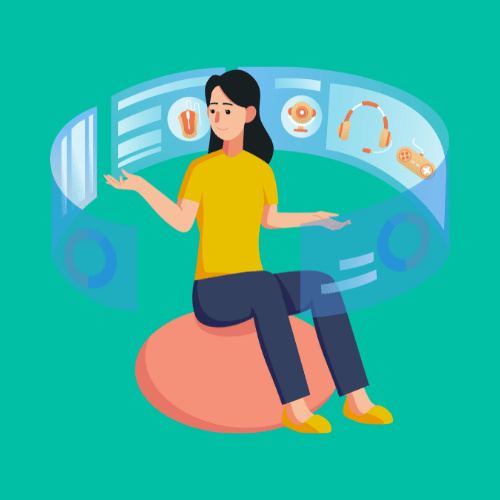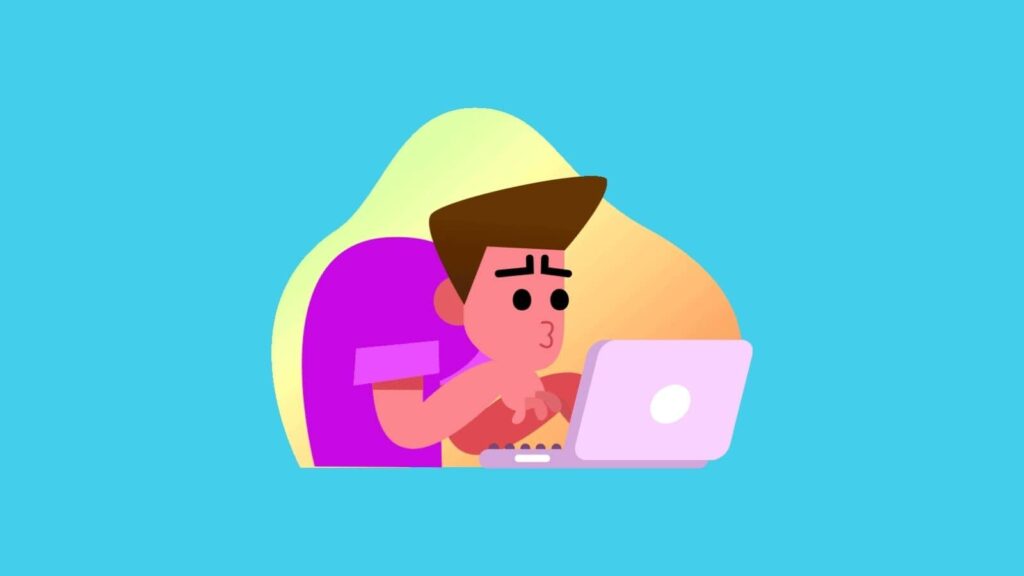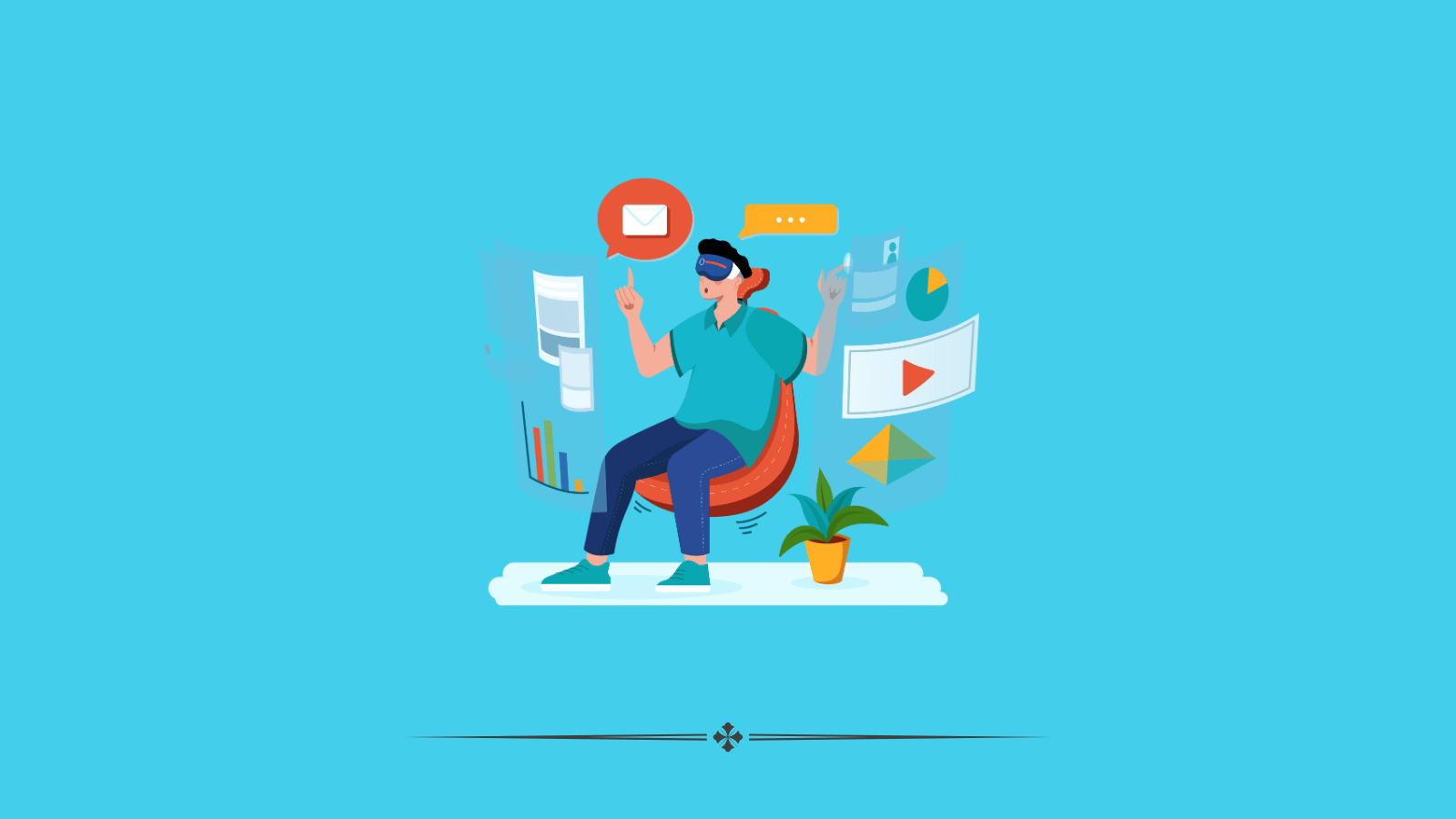Positive and Negative Effects of Technology on Students
Technology has been great for people all around the world. But there are also negative sides. See what students need to be aware of.

With unbelievable advancements in technology, its popularity and influence on our everyday lives are increasing day by day. It has made lives easier and easier in every aspect of life. From education to sports, to every field in the world, updated and evolved information is available readily. The field of teaching and education has greatly benefited from technology.
All this progress in technology has brought both positive and negative effects on education. It is partially up to the user to differentiate between the good and bad. In this article, we’re going to discuss some positive and negative effects of technology on students.
As ChatGPT is starting to influence the lives of students, we’ll also attempt to discuss the positive and negative effects of ChatGPT on education and students.
In this article
- Los efectos positivos de la tecnología en los estudiantes
- 1. Equipar a los estudiantes con habilidades técnicas
- 2. Mejora el aprendizaje y facilita a los estudiantes
- 3. Amplía la mente de los estudiantes
- 4. Efectos positivos de ChatGPT en los estudiantes
- Los efectos negativos de la tecnología en los estudiantes
- 1. Disminuye las habilidades sociales y aumenta la pereza
- 2. Puede distraer mucho
- 3. La tecnología afecta la salud
- 4. Efectos negativos de ChatGPT en los estudiantes
- ¿La tecnología es buena o mala para el aprendizaje?
- Preguntas Frecuentes
The positive effects of technology on students

Newer techniques in learning through technology have emerged which facilitates students and teachers. You can use technology to either learn or teach efficiently and enhance your strengths. Following are some positive effects of technology on students.
1. Equip students with technical skills
In today’s world, the use of computers in the classroom has become common and necessary. With so much information and help online, no student is foreign to searching for their respective fields and getting proficient in them. With increasing advances in technology, the more students use it, the more they will be better equally to handle the technicalities that they will face in their practical lives after their studies.
2. Enhances learning and facilities students
The most positive effect of technology on education and students is that it widely helps and enhances the learning process. Each and every detail of all the subjects are available online on various sites where students can go if they’re stuck. The best part is that it is only a click away. Since technology today has made smartphones, laptops, and iPads so easily available to carry for everyone, students can manage their work from anywhere. Smartboards and 3D printers have also made their way into the classrooms which can practically teach students the subjects their studying.
The new stress that the COVID-19 pandemic has brought nowadays has put technology on the front seat even more than before. The use of online teaching during the pandemic increased which has made students learn more and more about technology and how to properly use it to study. Where before not all schools and colleges were readily using technology to facilitate learning and student, COVID-19 has made it a necessity. Tech companies are looking to develop tools and user-friendly tech that will propel the use of technology even more.
3. Broadens the minds of students
The main weapon of students in the process of learning is their brains. The more they use it, the more ideas and innovations they can come up with. You can find every paper, research article, journal, video, and audio of every subject online within a matter of seconds. There are many websites online which have millions of books available without the hassle of getting out of your house.
There are even video games available that you can play to enhance the productivity of your mind. These games focus on strategies and challenges to evoke your brain towards problem-solving.
4. Positive effects of ChatGPT on students
As an AI language model, ChatGPT can have a significant impact on students by providing them with instant responses to their queries. Students can use ChatGPT to seek explanations, and learn new concepts in a conversational manner.
The following are some of the ways in which ChatGPT can impact students:
- Enhanced Learning: ChatGPT can provide students with access to a vast amount of information and knowledge, helping them learn new concepts and understand complex topics.
- Improved Problem-Solving: ChatGPT can assist students in problem-solving by providing them with step-by-step solutions to their queries.
- Time-Saving: ChatGPT can save students time by providing them with instant answers to their queries, eliminating the need for them to spend hours searching for information.
Overall, ChatGPT can have a positive impact on students by facilitating learning and improving problem-solving. Check out the negative effects of ChatGPT on students below.
The negative effects of technology on students

While there are many positive things about technology, one cannot overlook the negative part. Some negative effects of technology on students are listed below.
1. Decrease social skills and increases laziness
Because of the abundance of information available so easily online, students can get lazy in thinking. When you have everything in your grasp within seconds, the will to actually research and learn can seem a boring task. This also increases laziness because when you know you can do your essay at the last minute by just looking it up online, you will not use your creativity to make your work different.
Technology also has the disadvantage of being highly addictive. This makes students want to stay isolated and work on their own instead of group studying and brainstorming together.
2. Can be very distracting
While many students will use technology for their benefit, it is also very easy to get distracted in the process. There are so many ill-fitting and inappropriate things online that can attract students. When students spend too much time using technology they can get familiar with such things and easily access them. These kinds of distractions affect the learning of students and can be morally dangerous. Teachers and parents need to have strict boundaries regarding the use of technology.
Videos games and movies/videos are also very easily available online which can be another reason for distraction for students.
3. Technology affects health
The use of technology has made everything so accessible that the need to get up and move around to search for what you want has become a distant thought. The constant use of technology has made health issues very common. It has effects not only on your physical health but affects mental health also.
The screens of all smartphones, laptops, and iPads have made the complaint of poor eyesight common. The light they emit also causes headaches more frequently. Neck and spine problems have also become prevalent because of the posture and sitting that technology requires us to do.
The most common health effect that technology has on our health is obesity. Since it requires sitting in one place and no movement except your hands, students can get carried away and sit around for hours playing video games and watching movies and videos while eating junk foods. This can increase the weight which further causes issues such as heart diseases and high blood pressure.
Students also get bad posture due to sitting and curving their necks the wrong way.
4. Negative effects of ChatGPT on students
Societies always need to learn how to integrate new technologies. Artificial Intelligence (AI) is improving fast and it’s being integrated into our daily lives. Students have been using ChatGPT and Teachers are trying to keep up. Here are a couple of negative effects of ChatGPT on students:
ChatGPT responses are not based on facts: ChatGPT can sound very persuasive while the responses it gives are not always based on facts. ChatGPT may provide inappropriate or incorrect responses due to its inability to comprehend the context of certain situations or tasks.
Education quality impact: If ChatGPT is not appropriately trained or evaluated, its use could potentially reduce the quality of education.
Job loss: The implementation of ChatGPT in education, particularly in areas such as grading and assessment, may result in job loss for human educators.
Ethical concerns: There are worries that ChatGPT’s use in education may reinforce biases and societal inequalities if it is not trained on a diverse range of data.
Lack of human interaction: ChatGPT could take the place of human interaction, leading to students’ lack of empathy and understanding.
Limited creativity: ChatGPT can only generate responses based on the data it has been trained on, which may hinder students’ ability to think creatively.
Limited language comprehension: ChatGPT may have difficulty understanding idiomatic expressions or colloquial language, resulting in confusion for non-native speakers.
Is Technology Good or Bad for Learning?

Technology has both positive and negative effects on learning. On the one hand, it enhances student engagement, encourages collaboration, and helps cater to different learning styles by making lessons more interactive and adaptable. For example, tools like tablets and educational software can turn traditional subjects into engaging activities, increasing student participation and comprehension. Furthermore, technology prepares students for a digital future by building necessary skills, such as using presentations or collaborating online.
On the other hand, technology can also introduce challenges. It can become a distraction if not managed properly, potentially leading to reduced focus during lessons. Additionally, over-reliance on technology may decrease face-to-face interaction and critical thinking skills, which are vital in traditional learning environments. Not all students have equal access to technology, which can exacerbate inequalities in learning outcomes.
Technology can significantly improve learning when used thoughtfully, but it also requires careful management to avoid potential drawbacks.
Conclusion
Learning and teaching have become so much easier and enhanced because of the ease that technology has offered. Thousands of apps and websites are available online which assist students and teachers alike. One such website is Peachy Essay where you can go to get help in your studies, and if you’re a teacher or a tutor you can enroll to help students.
FAQ
Q: How does technology affect students’ learning?
- Technology can greatly enhance learning by providing interactive and personalized educational experiences, access to vast resources, and enabling virtual collaboration. It fosters engagement and can cater to different learning styles.
Q: What are the negative impacts of technology on students?
- Potential negative impacts include decreased attention span, reliance on technology for answers, potential for distraction, and the risk of cyberbullying or exposure to inappropriate content.
Q: How does technology affect students’ social skills?
- While technology facilitates global connections and social interaction, excessive use may lead to reduced face-to-face interactions, impacting the development of social skills and real-world relationship building.
Q: Can technology improve student motivation and engagement?
- Yes, technology can boost motivation and engagement by making learning more interactive, relevant, and enjoyable, with tools like educational games, simulations, and multimedia content.
Q: What is the role of technology in personalized education?
- Technology allows for personalized education by providing adaptive learning tools that cater to individual learning paces, styles, and interests, making education more effective and tailored.
Q: How does technology prepare students for the future workplace?
- Technology prepares students for the future workplace by familiarizing them with digital tools, collaborative platforms, and skills like coding and data analysis, which are increasingly valuable in modern job markets.
Q: What are the challenges of integrating technology in education?
- Challenges include ensuring equal access to technology, training teachers to effectively use tech tools, balancing screen time, and safeguarding students’ online privacy and security.
Q: How does technology influence creativity in students?
- Technology can enhance creativity by providing tools for digital art, music creation, 3D modeling, and more, allowing students to express themselves and innovate in ways not possible before.
Q: Does technology affect students’ physical health?
- Excessive use of technology can impact physical health, leading to issues like eye strain, poor posture, and reduced physical activity. It’s important to balance tech use with physical well-being.
Q: How can technology support students with special needs?
- Technology supports students with special needs through assistive tools like speech-to-text software, interactive learning apps, and customized educational programs that cater to their unique requirements.
Q: How does technology enhance student learning?
- Technology enhances learning by providing access to a wealth of information and interactive resources, enabling personalized learning experiences, and fostering greater engagement through multimedia and digital tools.
Q: Can technology lead to improved academic performance?
- Yes, when used effectively, technology can lead to improved academic performance by facilitating a deeper understanding of concepts, enabling practice through educational software, and providing instant feedback.
Q: How does technology affect students’ critical thinking skills?
- Technology can enhance critical thinking by presenting students with problem-solving activities, simulations, and real-world scenarios that require analysis and decision-making.
Q: Does technology in the classroom support collaborative learning?
- Absolutely, technology fosters collaborative learning through online discussion forums, group projects using digital platforms, and enabling real-time collaboration on documents and presentations.
Q: What are the challenges of using technology in learning?
- Challenges include ensuring equitable access to technology, potential distractions from non-educational content, the need for adequate digital literacy skills, and balancing screen time with traditional learning methods.
Q: How does technology affect students’ research skills?
- Technology significantly aids in developing research skills by providing easy access to a wide range of sources and data, along with tools for organizing and analyzing information.
Q: Can technology in education lead to a more inclusive learning environment?
- Yes, technology can create a more inclusive learning environment by providing assistive technologies for students with disabilities and enabling educators to tailor content to meet diverse learning needs.
Q: How does technology impact the role of teachers in the learning process?
- Technology transforms the role of teachers, shifting them from traditional lecturers to facilitators of learning, guiding students in navigating digital resources and applying knowledge in practical contexts.
Q: What is the role of technology in lifelong learning?
- Technology plays a crucial role in lifelong learning by offering accessible learning platforms, online courses, and resources that support continuous education beyond formal schooling.
Q: How does technology influence the development of learning habits?
- Technology can influence learning habits by encouraging independent learning, enabling on-demand access to educational content, and fostering habits of regular review and practice through digital tools.
Q: How does technology contribute to decreased attention spans in students?
- Technology, especially with its fast-paced and frequently changing content, can contribute to shorter attention spans in students. Constant digital stimulation can make sustained focus on less interactive or slower-paced tasks challenging.
Q: Can technology use lead to addiction in students?
- Yes, excessive use of technology, such as social media and gaming, can lead to addictive behaviors in students, characterized by a compulsive need to engage with digital devices, often at the expense of other activities.
Q: What are the effects of screen time on students’ physical health?
- Prolonged screen time can negatively impact physical health, leading to eye strain, poor posture, headaches, and reduced physical activity, which can contribute to obesity and other health issues.
Q: How does technology affect students’ social skills?
- Overreliance on technology can impair the development of face-to-face social skills in students. It can limit their opportunities for real-life social interactions, which are crucial for developing empathy, communication skills, and emotional intelligence.
Q: Does technology use impact students’ sleep patterns?
- Excessive use of technology, especially before bedtime, can disrupt students’ sleep patterns. The blue light emitted from screens can interfere with the production of melatonin, the hormone responsible for regulating sleep.
Q: Can technology in education lead to increased stress and anxiety?
- The constant connectivity and information overload from technology can lead to increased stress and anxiety in students, especially if they feel pressure to be always available or to keep up with vast amounts of information.
Q: How does technology exposure affect students’ mental health?
- Prolonged exposure to technology, particularly social media, can negatively affect students’ mental health, leading to issues like depression, anxiety, and low self-esteem, often fueled by cyberbullying or unrealistic comparisons with others.
Q: What is the impact of digital distractions on learning?
- Digital distractions, such as notifications, social media, and online games, can disrupt the learning process, making it difficult for students to concentrate on educational tasks and retain information effectively.
Q: How does technology influence students’ writing and communication skills?
- Frequent use of digital communication, which often includes abbreviated language and emojis, can affect students’ writing and verbal communication skills, leading to challenges in expressing themselves clearly and appropriately in academic and professional settings.
Q: Are there long-term impacts of technology dependence in students?
- Long-term impacts of technology dependence can include reduced ability to engage in deep thinking and reflective thought, challenges in interpersonal relationships, and reliance on technology for information and problem-solving instead of developing independent cognitive skills.
Create more and better content
Check out the following resources and Grow!